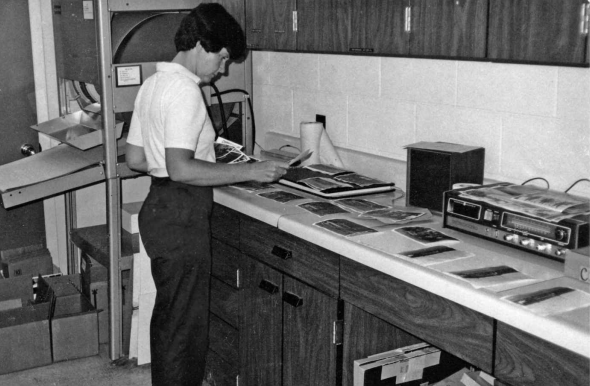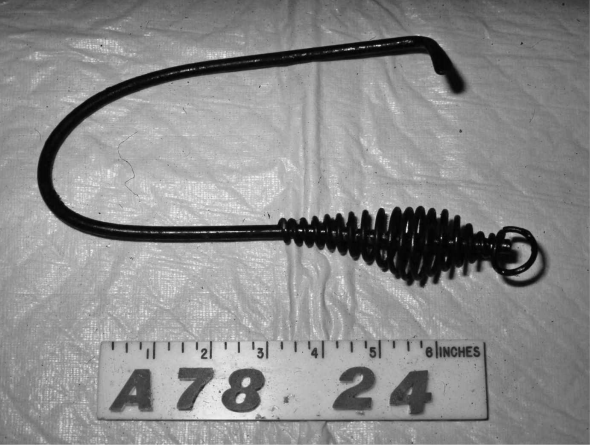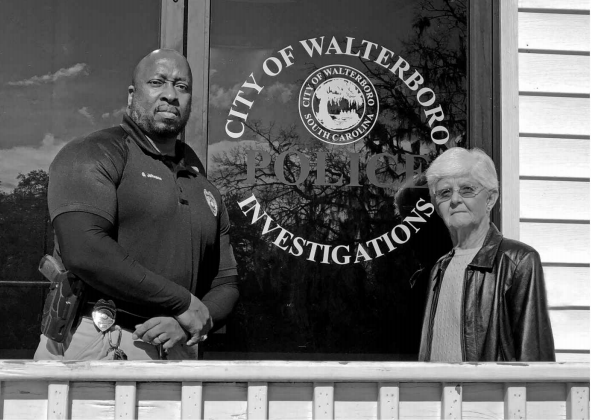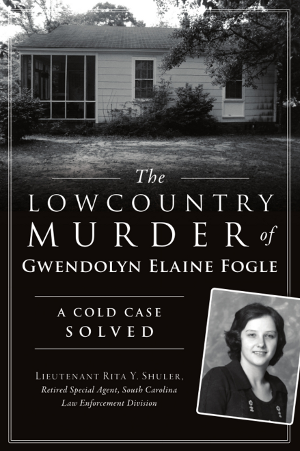
The evidence was overwhelming. Blood, fingerprints, clothing, even the murder weapon were all found on scene. But none of it matched up—when Gwendolyn Elaine Fogle was murdered in her own home in Walterboro, South Carolina, in 1978, it was like her killer had vanished into thin air, bloody footprints and all. Until Rita Shuler came along and tracked him for nearly 40 years.
Shuler, a special investigator for the South Carolina Law Enforcement Division (SLED), had first joined the case as supervisor of the SLED Forensics Photography Lab, processing and developing the photos from the crime scene. In 1978, the only digital cameras around were the ones you operated with your own ten digits, so every bit of photographic evidence that SLED collected required trained, careful handling from their arrival in the darkroom to their deposit in the case file.
Those photos would prove crucial to finding Fogle’s killer. Surprised in her own home late one night during what appeared to be a foiled robbery, Fogle had been beaten, sexually assaulted, and strangled with a fireplace poker in a particularly violent slaying. Feeling an uncanny kinship with Fogle, from their age to their upbringing even to the kind of shoes and sweaters they both wore, Rita Shuler took the hunt personally, vowing never to rest until the culprit was caught.

The Case Goes Cold
That rest wouldn’t come for many years. Despite the considerable evidence collected at the scene, none of it offered any concrete leads, only partial pictures of the perpetrator. Worse, as so often happens in sensational cases, early leads—in this case, of violent neighbors—turned out over time to be red herrings, throwing investigators off the trail. Weeks became months, and still Fogle’s family waited for justice. In 1985, seven years after her murder, with no new evidence forthcoming, SLED was forced to put the case on ice.
Yet Rita Shuler never gave up—the case bugged her, kept her up at night, pestered her even as she moved on to other opportunities, even after she retired in 2001. Yet keeping track of the new developments in forensic technology, she never lost faith that one day the evidence might tell the story in a way that it couldn’t in 1978, as it had before (for example, with JoAnn Dewey, Anita Andrews, and Tina Faelz).
Shuler was right. With the emergence of DNA testing, criminal forensics had undergone a revolution, blowing the hinges off cases long thought to be sealed away forever. In the early 2000s, SLED reopened Fogle’s case, resubmitting evidence for examination and establishing matches for male DNA found on-scene. These revelations didn’t happen overnight—in the intervening decades, crucial pieces of evidence had been lost amid the complicated chain of custody, and the initial results from DNA testing weren’t enough to pinpoint a specific individual right away—but they did offer new leads, and most importantly, new hope.

So much hope, in fact, that in 2015 the new lead investigator in Walterboro, Corporal Gean Johnson, had made Fogle’s murder his top priority for cold cases—even calling Shuler out of retirement to help him solve it. After months of reviewing every piece of evidence still remaining, every report, every page of every case file, and every new method now available, Johnson and Shuler stumbled on a breakthrough that clinched it once and for all, thirty-seven years later.
A Case-Cracking Photo
Whodunit? Well, we can’t spoil everything here—but we can say that in a remarkable twist of fate, it was a single photograph that Shuler had first handled back in 1978 that provided the key piece of evidence to identify Fogle’s killer. Want to read more? Shuler herself tells the full story in her book The Lowcountry Murder of Gwendolyn Elaine Fogle, a riveting account of the crime, the investigation, and ultimately, the cold case cracked.
Here at Crime Capsule we’re always proud to feature the men and women of law enforcement who work tirelessly in pursuit of justice. To Lieutenant Rita Shuler—now happily retired for a second time—to Corporal Gean Johnson, and to all those still in active service, we salute you!

For decades, evidence of the 1978 murder of Gwendolyn Elaine Fogle lay in the evidence room at the Walterboro Police Department. Investigators periodically revisited the case over the years, but it remained the department’s top cold case for thirty-seven years. Special Agent Lieutenant Rita Shuler worked on the case shortly after she joined the South Carolina Law Enforcement Division (SLED), and she couldn’t let it go, not even after her retirement in 2001. In May 2015, Lieutenant Shuler teamed up with new investigator Corporal Gean Johnson, and together they uncovered key evidence that had been overlooked. With new advancements in DNA and fingerprint technology, they brought the case to its end in just four months. Join Shuler as she details the gruesome history of this finally solved case.
Looking for more to read during quarantine? Check out our quaran-reads here. Finding us for the first time, and want to learn more about what we do? Visit our welcome page and sign up for the Crime Capsule email newsletter. See you behind bars!



